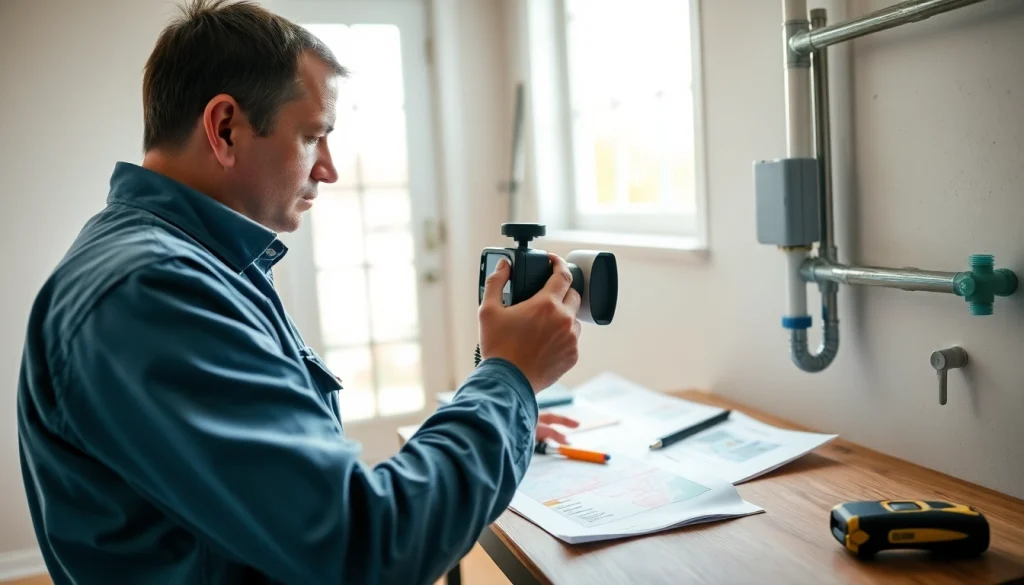Expert Hidden Leak Detection Techniques for 2025: A Complete Guide

Understanding Hidden Leak Detection
Hidden leak detection is a critical aspect of home maintenance, helping homeowners identify water leaks that are not immediately visible. These leaks can result in significant damage to property, leading to costly repairs and health hazards due to mold growth. The Leak Hunter offers advanced solutions tailored to pinpoint these elusive leaks efficiently, ensuring that your home remains safe and your maintenance costs are minimized. When exploring options, hidden leak detection provides comprehensive insights into effective detection techniques.
What is Hidden Leak Detection?
Hidden leak detection refers to the process of locating water leaks that are concealed from plain sight, often within walls, ceilings, or underground. These leaks can stem from various plumbing issues, such as corroded pipes, joint failures, or even ground movement affecting underground water lines. Using specialized equipment and techniques, professionals can accurately identify these leaks without causing unnecessary damage to your property.
Common Causes of Hidden Leaks
- Age of Plumbing: Older pipes are more susceptible to corrosion and leaks.
- Temperature Changes: Extreme weather conditions can lead to pipe expansion and contraction, causing cracks.
- Poor Installation: Incorrectly installed piping systems may develop leaks over time due to stress.
- Ground Movement: Changes in soil conditions can place undue pressure on underground piping.
Why Early Detection is Crucial
Identifying leaks early can save homeowners thousands in repairs. Undetected leaks not only lead to structural damage but also contribute to higher water bills and may foster mold growth, which can have adverse health effects. Implementing a regular maintenance schedule can help catch these issues before they escalate into significant problems.
Advanced Technologies in Leak Detection
Advancements in technology have dramatically improved the accuracy and efficiency of leak detection methods. Modern leak detection services employ cutting-edge tools to diagnose and locate leaks with minimal disruption to your home environment.
Utilizing Thermal Imaging for Accuracy
Thermal imaging is a non-invasive method that helps detect hidden leaks by identifying temperature variations in walls and floors. When moisture seeps through surfaces, it often results in temperature deviations that thermal cameras can easily spot. This technology is particularly effective in detecting leaks behind walls, significantly reducing the time required for a thorough assessment.
Acoustic Listening Devices Explained
Acoustic listening devices amplify the sound of water escaping from pipes, making it easier to identify the location of a leak. These devices can detect sounds even when the pipes are buried underground. Skilled technicians can distinguish between normal environmental noises and the specific frequencies associated with leaks, allowing for precise leak location.
Benefits of Tracer Gas Detection
Tracer gas detection involves introducing a safe, odorless gas into the plumbing system that escapes at the leak point. This method is highly effective for small or hard-to-reach leaks, as it allows specialists to pinpoint the exact location of the leak without invasive procedures. It’s a preferred method for gas leak detection as well, ensuring the safety and integrity of the home.
Challenges in Identifying Hidden Leaks
Despite advanced technologies, several challenges persist in accurately identifying hidden leaks. Homeowners must be aware of these obstacles to effectively manage potential issues.
Signs and Symptoms of Hidden Water Leaks
- Water Stains: Discoloration on walls or ceilings may indicate a leak.
- Musty Odors: Persistent damp smells can signal mold growth due to hidden moisture.
- Increased Utility Bills: A sudden spike in water bills may point to an undetected leak.
Common Misconceptions About Leak Detection
Many homeowners believe that they can manage leak detection on their own using DIY methods. However, without the appropriate tools and expertise, it can be easy to overlook significant issues. Professional services provide not only accurate detection but also comprehensive reporting, which aids in understanding the extent of the problem.
Obstacles Faced by Homeowners
Homeowners often face challenges in identifying the location and severity of leaks. Access issues, lack of knowledge about plumbing systems, and the fear of potential damage caused by invasive assessments can complicate the situation. Engaging with professional leak detection services can mitigate these concerns by leveraging advanced techniques to locate and repair leaks efficiently.
Best Practices for Homeowners
Preventative measures can significantly reduce the likelihood of hidden leaks in your home. Here are some best practices that every homeowner should consider.
Regular Maintenance Tips to Prevent Leaks
- Schedule routine plumbing inspections every few years to identify potential weaknesses.
- Insulate exposed pipes to protect them from temperature fluctuations.
- Keep an eye on your water bill; any unexplained increases should prompt immediate investigation.
How to Conduct DIY Leak Checks
Homeowners can perform several simple checks to assess their plumbing systems: look for wet spots, check the water meter when no water is being used, and listen for sounds of running water in quiet moments. These proactive steps can help catch potential issues before they escalate.
When to Call a Professional Leak Detection Service
If you suspect a leak but cannot pinpoint its source, or if your home exhibits signs of water damage, it’s time to contact a professional. Services like The Leak Hunter are equipped to handle complex cases requiring advanced detection methods.
The Future of Leak Detection in 2025 and Beyond
The landscape of leak detection is rapidly evolving, with continued advancements anticipated in technology and techniques. Staying informed about these changes can help homeowners remain proactive in managing their plumbing systems.
Emerging Technologies in Leak Detection
Future innovations may include AI-driven diagnostics that learn from and adapt to specific building characteristics, leading to faster and more accurate leak detections. Smart home technology integration will also play a vital role in real-time monitoring of plumbing systems, alerting homeowners to potential issues before they develop into significant leaks.
Predicted Industry Trends for Water Management
As water conservation becomes increasingly essential, the plumbing industry is leaning towards more sustainable practices. This includes better leak detection methods that not only save water but also reduce energy costs associated with heating and pumping water.
Enhancing Home Safety through Advanced Detection
With an ever-growing emphasis on home safety, effective leak detection is becoming a standard feature in modern homes. Understanding these technologies will empower homeowners to make informed decisions about their plumbing systems and ensure their living environments remain safe and efficient.



